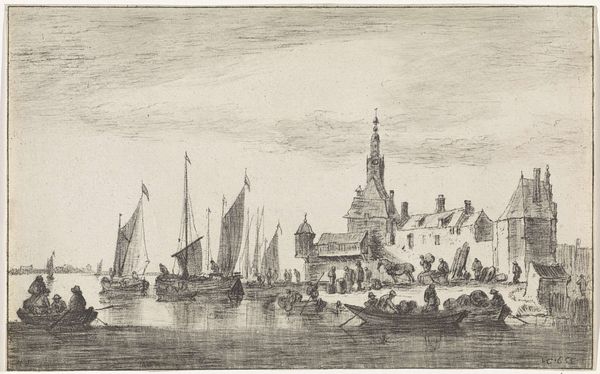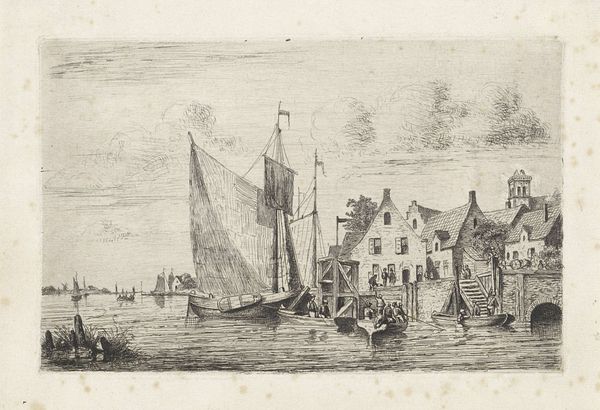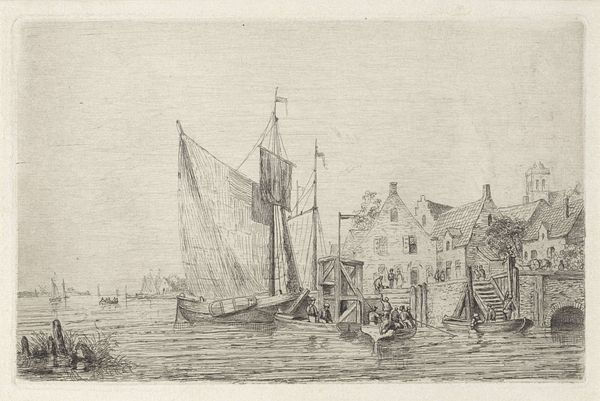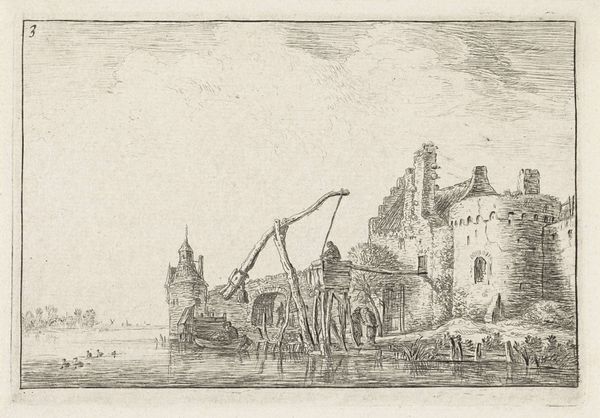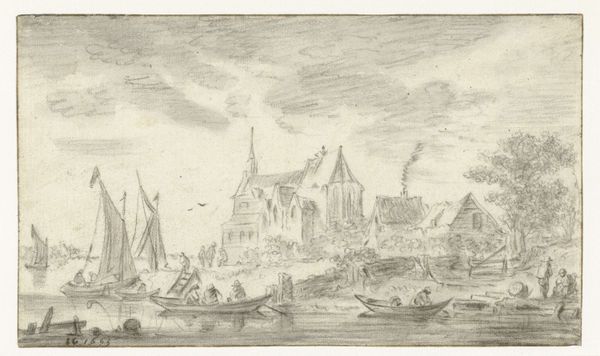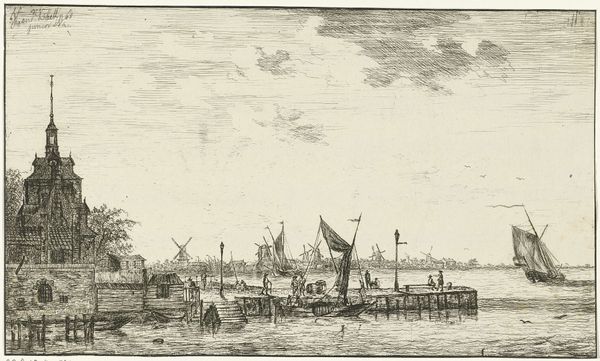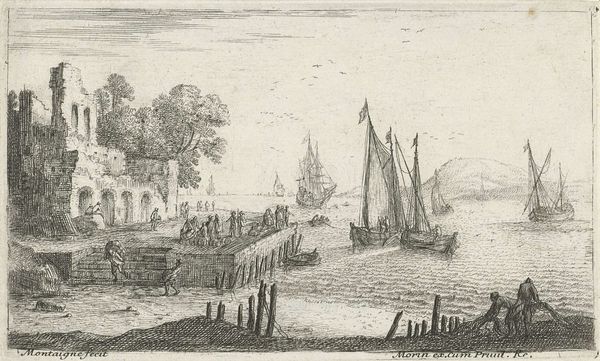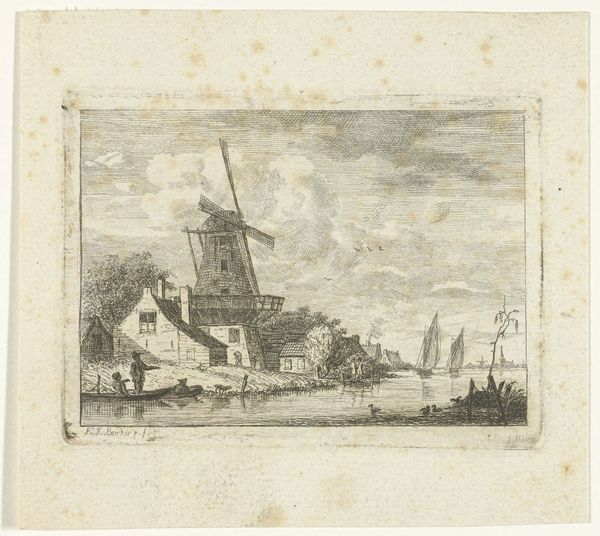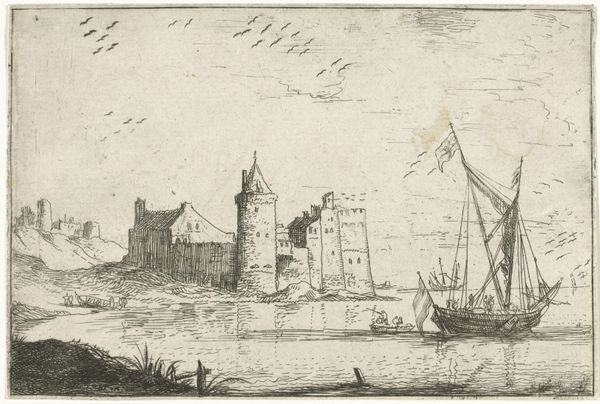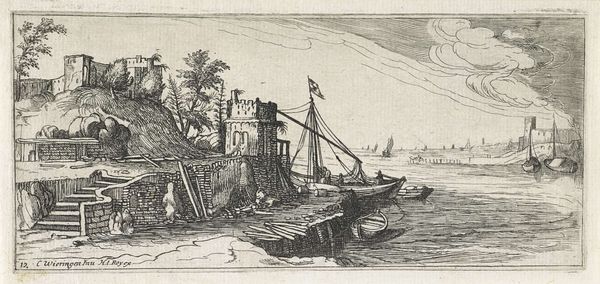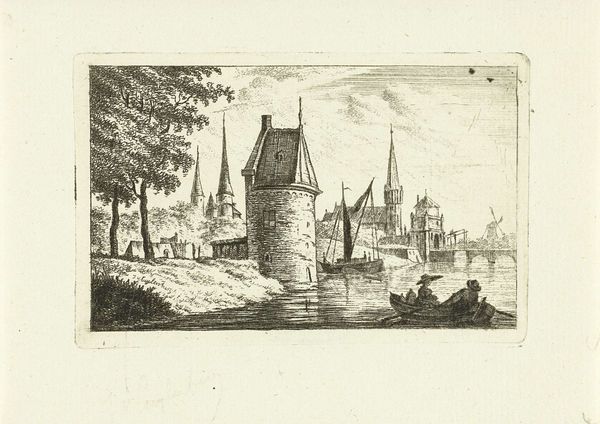
drawing, print, etching
#
drawing
#
baroque
#
dutch-golden-age
# print
#
pen sketch
#
etching
#
pencil sketch
#
landscape
#
form
#
line
#
cityscape
#
realism
#
building
Dimensions: height 98 mm, width 141 mm
Copyright: Rijks Museum: Open Domain
Editor: This etching by Anthonie Waterloo, titled "Aanlegplaats bij een gebouw met een toren," or "Landing Stage by a Building with a Tower," dates sometime between 1630 and 1751. The delicate lines create a sense of bustling activity around the water's edge. What really stands out to me is the detail within the sketch, but I’m curious, how do you interpret the context around its imagery? Curator: Looking at it historically, the image speaks to the economic vitality of the Dutch Golden Age. Etchings like these weren't just art; they were commodities, reflecting and shaping public perceptions of the landscape and its role in Dutch prosperity. Notice how the building, though modest, is central to the harbor activity? Editor: Yes, it seems like everything is in motion around that building. Curator: Precisely! And who do you think these prints were meant for? Certainly not the people *in* them. The burgeoning merchant class, eager to assert their status and connection to the land through consumption of these images, that became widely accessible. How do you think that influences the artist’s decisions, even compositionally? Editor: I see! Perhaps that explains the seemingly ordinary, almost documentary style. It’s less about idealized beauty and more about accurately depicting everyday life, as if capturing a scene for those who profit from it. I also notice how many different styles have been associated with this artwork, like Baroque, Dutch Golden Age, landscape, and Realism. Why so many styles in the artwork's metadata? Curator: That's a key observation! The art world often uses terms that overlap, evolve, or simply describe different facets of a work. In a work like this one you can consider Realism’s attention to accurate detail and natural scenes. The Dutch Golden Age emphasizes national pride and daily life, and Baroque, while primarily known for grandeur, also found expression in detailed depictions of ordinary subject matter for art consumers. Styles give the image historical information about the painting's market and distribution. Editor: I never thought of the multiple layers of influence. Thanks! That gives me a much richer understanding of Waterloo’s work and the world it inhabited.
Comments
No comments
Be the first to comment and join the conversation on the ultimate creative platform.


